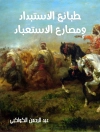This book develops a philosophy of aesthetic experience through two socially significant philosophical movements: early German Romanticism and early critical theory. In examining the relationship between these two closely intertwined movements, we see that aesthetic experience is not merely a passive response to art—it is the capacity to cultivate true personal autonomy, and to critique the social and political context of our lives. Art is political for these thinkers, not only when it paints a picture of society, but even more when it makes us aware of our deeply ingrained forms of experience in a transformative way. Ultimately, the book argues that we have to think of art as a form of truth that is not reducible to communicative rationality or scientific knowledge, and from which philosophy and politics can learn valuable lessons.
Jadual kandungan
1. Introduction.- 2. Aesthetic Semblance and Play as Responses to the Disfigurement of Human Social Existence in Schiller’s Aesthetic Education.- 3. Aesthetic Experience at the Limits of Thought in Hölderlin’s New Letters on Aesthetic Education.- 4. The Endless Pursuit of Universal Sense in Friedrich Schlegel’s Political and Aesthetic Thought.- 5. Walter Benjamin’s Philosophy of Critical Experience—From the Romantic Artwork to the Disillusioning of Mimesis.- 6. Aesthetic Truth as the Mimesis of False Consciousness in Adorno’s Aesthetic Theory.- 7. Conclusion: The Benjamin–Adorno Debate on the Nature of Aesthetic Experience.
Mengenai Pengarang
Nathan Ross is Associate Professor of Philosophy at Oklahoma City University. His first book, On Mechanism in Hegel’s Social and Political Philosophy, was published in 2008. He has published essays in Philosophy Today, The Graduate Faculty Philosophy Journal, and Epoché, and an edited volume on the aesthetic philosophies of Benjamin and Adorno.












